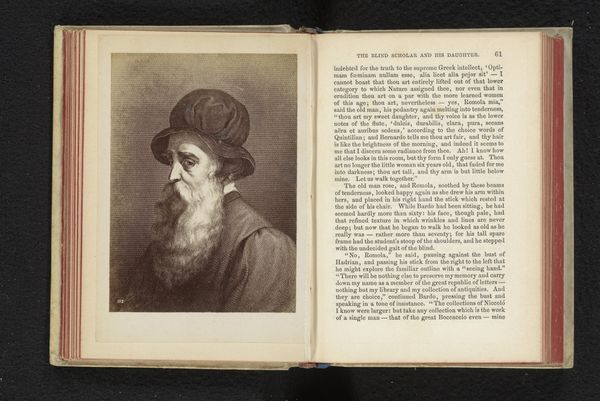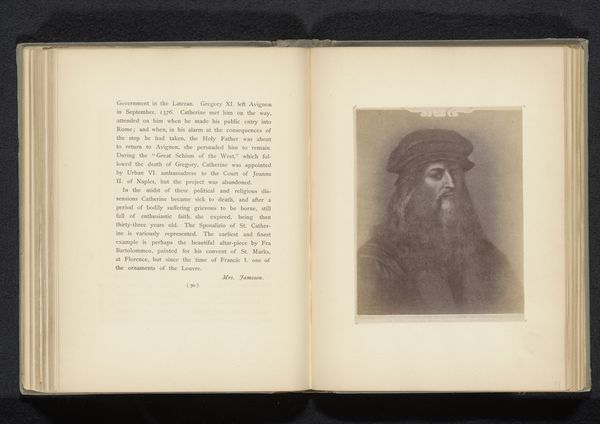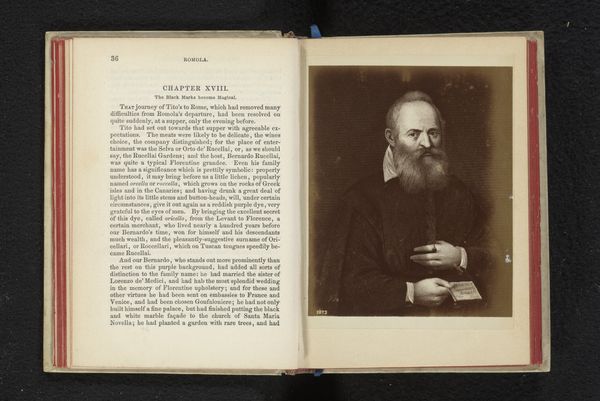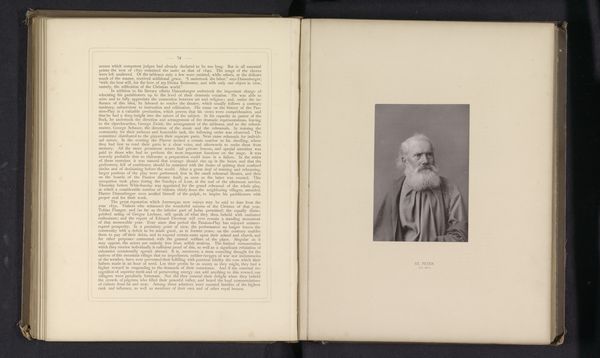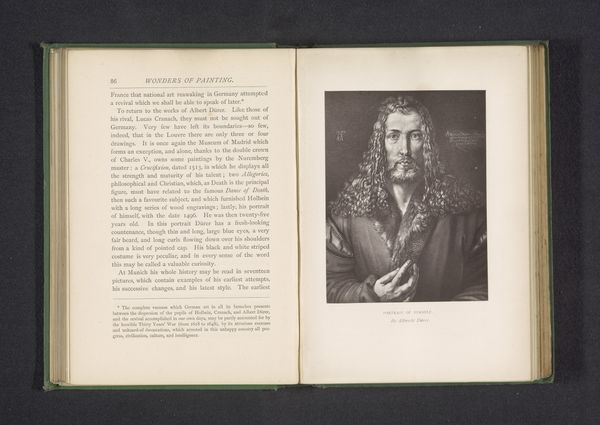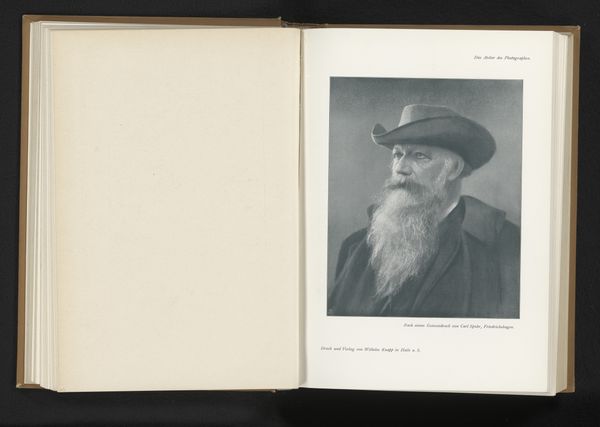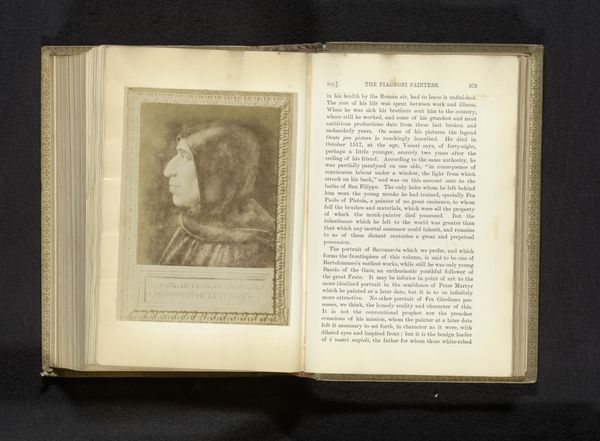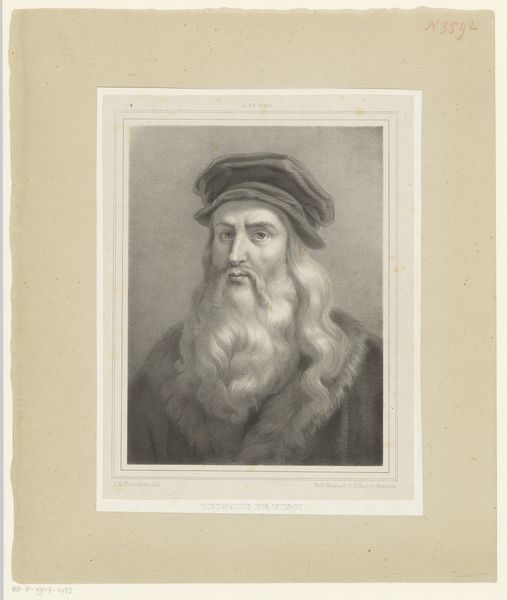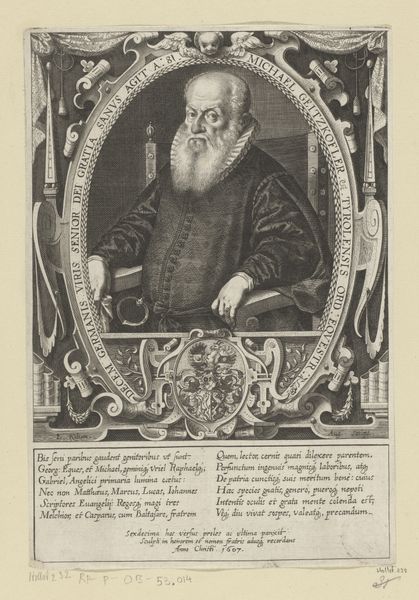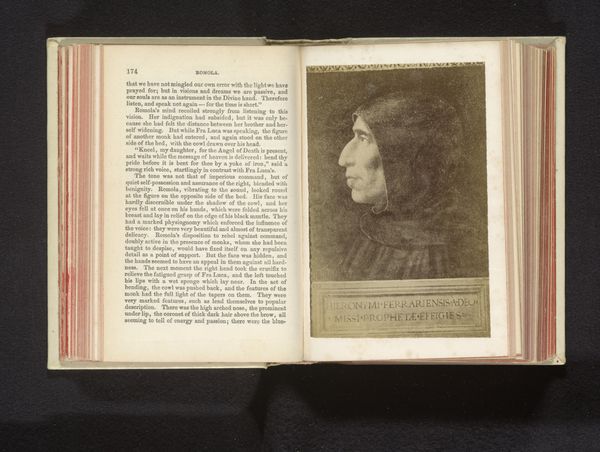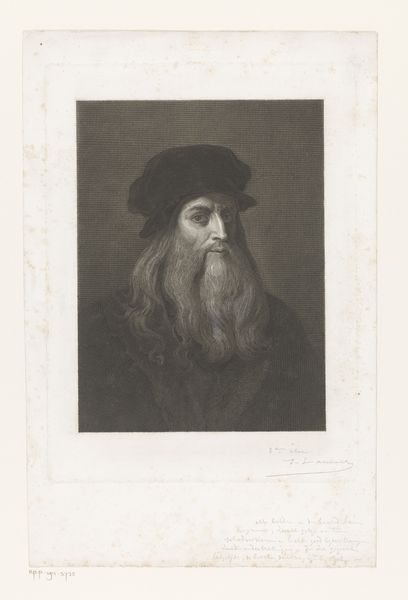
photography, gelatin-silver-print
#
portrait
#
11_renaissance
#
photography
#
gelatin-silver-print
Dimensions: height 127 mm, width 95 mm
Copyright: Rijks Museum: Open Domain
Curator: Here we have a reproduction, a gelatin-silver print, dating to before 1863, of a portrait of Leonardo da Vinci by Giacomo Brogi. It's within an open book. What’s your initial take on it? Editor: A somewhat melancholy figure, rendered in subdued tones. He carries the weight of history and perhaps, the burdens of genius. The image is intimate, but its scale, due to the book format, suggests a personal object, carefully considered. Curator: Fascinating observation! The means of production is really interesting here. It's not just a straightforward reproduction; the use of the gelatin-silver process connects the artistic tradition of portraiture with emergent photographic technologies. Consider the labor involved in creating the original print, and then photographing it again for mass distribution within this book. It brings a material dimension to the myth of Leonardo. Editor: I see the icon of Leonardo transcending the image itself, no matter the medium used to reproduce his image. The photographic method employed here speaks of its own time, yet Leonardo's gaze and bearing remains. The furrows on his face tell a tale that is at once personal, reflective of his genius, and reflective of human intellectual struggles in any time period. I notice his eyes in particular convey that sense. Curator: Absolutely. And there's a deliberate contrast here, I think. The choice of this photographic technique, usually associated with capturing crisp detail, is applied to an image of an artist famous for sfumato, the blurring of lines. This introduces an element of abstraction, prompting questions about authenticity and artistic skill in representation. Did the materials available shape the final result? It’s not a question of skill as much as available means for creating a desired representation, in this moment in time. Editor: But does that sfumato technique speak even through a reproductive material like this? What matters to me are not the means, which surely influence interpretation but do not limit it, but what remains visible even through those varied techniques. This image is a container of cultural memory; seeing Da Vinci conjures thoughts and feelings that stretch back to the Renaissance but remain vividly potent. He’s a symbolic shorthand for artistry, intellect, the endless quest for knowledge. Curator: So well-said! I believe by looking closely at the method of reproduction here, the bookmaking process and the very chemistry involved in the print itself, we get a deeper understanding of how Leonardo's legacy has been manufactured, packaged, and sold through the marketplace of ideas, even into our contemporary world. Editor: Yes, while his art and life may become a commodity, it's the symbolic capital attached to his name that allows the continued exchange. By gazing at a portrait, even one filtered through layers of reproduction, viewers tap into a well of knowledge, aspiration, and the undying human need to create and innovate. It speaks volumes regardless of medium.
Comments
No comments
Be the first to comment and join the conversation on the ultimate creative platform.
